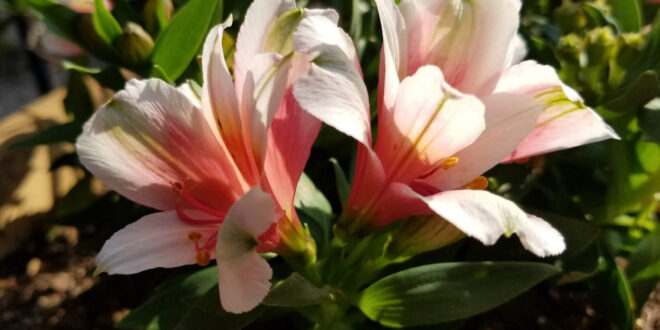Originating from South America and otherwise known as the ‘Peruvian Lily’ or ‘Lily of the Incas’, Alstroemeria is named after a Swedish baron named Claus von Alstromer, who brought the seeds back to Europe in the mid-1700s.
The flowers of the alstroemeria plant are so diverse that they are often likened to that of orchid blooms. You can always find an alstroemeria to meet your design needs, thanks to the wide variety of color combinations available. The center three petals on these beautiful blooms feature streaks and speckles. Some flowers come in multicolor blooms with brushstrokes of color.
Plants of this genus grow from a cluster of tubers. They send up fertile and sterile stems, the fertile stems of some species reaching 1.5 meters in height. The leaves are alternately arranged and resupinate, twisted on the petioles so that the undersides face up. The leaves are variable in shape and the blades have smooth edges. The flowers are solitary or borne in umbels. The flower has six tepals each up to 5 centimeters long. They come in many shades of red, orange, purple, green, and white, flecked and striped and streaked with darker colors. There are six curving stamens. The stigma has three lobes. The fruit is a capsule with three valves
Growing Alstroemeria
Alstroemeria is an easy plant to grow. The roots of the alstroemeria form tubers, which are a form of storage root. These tubers allow the plants to store up nutrients and water for times of need. This allows the plants to deal with drought and other stressful periods better than most.
Tuberous roots also mean that these plants are easy to divide and multiply. As the plants form large colonies, it is easy enough to dig them up and divide them. Make sure there are healthy tubers among the bunch, then simply replant and water well. In general, alstroemeria doesn’t enjoy having their roots disturbed too often, so avoid dividing every year. With some of the more temperamental varieties and species, you may have to go a year or two after dividing with no blooms as the plants reestablish.
Like caring for any perennial, plant alstroemeria in well-drained soil that won’t stay too wet. Because of their fleshy tuberous roots, alstroemeria is likely to rot in too much water. However, they do appreciate consistent moisture, especially during flowering, but once the plants are established, they can handle short droughts without a problem.
Alstroemeria grow best in full sun. Many varieties can handle part sun, but they are much more likely to flop and have fewer flowers. For taller varieties, use a stake to hold up the tall stalks.
Cut Flower Care
Growing alstroemeria in your home garden is a great way to supply cut flowers with minimal care. It is actually best to not cut alstroemeria blooms from the stem as you would any other cut flower. The best way to pick stems of blooms is to pull the stem out of the flower. Simply grasp the flower stalk at the base of the stem near the ground and pull upward until the whole stem comes up from the ground. This helps encourage the plant to form new shoots at the base. Cutting the stem halfway down (like you might any other bloom) can actually slow the growth of the plant. Once you pull the whole stem up, cut the stalk to the length you need, remove any lower foliage that might be sitting directly in the water, and place in your vase. You’ll have blooms for weeks!
- Family: Alstroemeriaceae
- Genus: Alstroemeria (al-stre-EE-ree-uh) (Info)
- Species: psittacina (sit-uh-SIGN-ah) (Info)
- Synonym:Alstroemeria pulchella
- Category: Perennials
- Height: 6-12 in. (15-30 cm), 12-18 in. (30-45 cm)
- Spacing: 3-6 in. (7-15 cm)
- Hardiness: USDA Zones 7a-10b
- Sun Exposure: Sun to Partial Shade
- Danger: N/A
- Bloom Color: Pale Pink, Pink, Rose/Mauve, Red, Scarlet (Dark Red), Green, Maroon (Purple-Brown), Cream/Tan
- Bloom Time: Mid Summer
- Foliage: Herbaceous, Smooth-Textured
- Other details: Average Water Needs; Water regularly; do not overwater, May be a noxious weed or invasive
- Soil pH requirements: 5.6 to 6.0 (acidic), 6.1 to 6.5 (mildly acidic), 6.6 to 7.5 (neutral)
- Patent Information: Non-patented
- Propagation Methods: By dividing rhizomes, tubers, corms or bulbs (including offsets)
- Seed Collecting: Allow pods to dry on plant; break open to collect seeds








